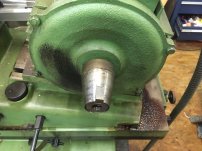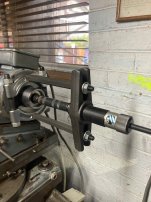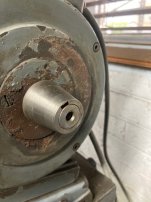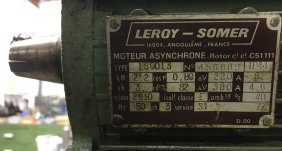ballen
Diamond
- Joined
- Sep 25, 2011
- Location
- Garbsen, Germany
A number of you know about my Studer RHU-450 cylindrical grinder, which I bought a number of years ago and fixed up.
Recently I got a bunch of parts that fit it, including different sized motor pulleys. If the grinding wheel wears, you put on a larger motor pulley to get higher rpm on the wheel. The pulleys are very nicely made, with a ground taper inside and a relieved section in between the large and small diameter parts. Here is the current 62mm motor pulley:
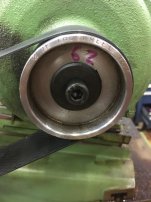
When I took off this pulley, I discovered that a some point in the past the motor got swapped. Whoever fixed it produced the following hack:
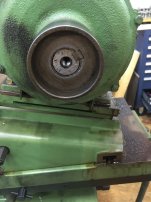
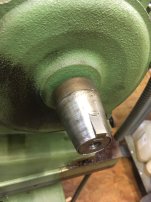
They also slotted the pulley to match:
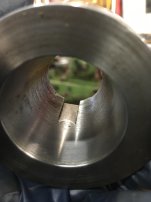
The path of shortest resistance is to just slot the three new pulleys in the same way. But the current 62mm pulley has about 0.15mm = 0.006" of runout, all coming from that crappy taper bit, so it's temping to do a better repair. How would you fix this?
Cheers,
Bruce
Recently I got a bunch of parts that fit it, including different sized motor pulleys. If the grinding wheel wears, you put on a larger motor pulley to get higher rpm on the wheel. The pulleys are very nicely made, with a ground taper inside and a relieved section in between the large and small diameter parts. Here is the current 62mm motor pulley:

When I took off this pulley, I discovered that a some point in the past the motor got swapped. Whoever fixed it produced the following hack:


They also slotted the pulley to match:

The path of shortest resistance is to just slot the three new pulleys in the same way. But the current 62mm pulley has about 0.15mm = 0.006" of runout, all coming from that crappy taper bit, so it's temping to do a better repair. How would you fix this?
Cheers,
Bruce


